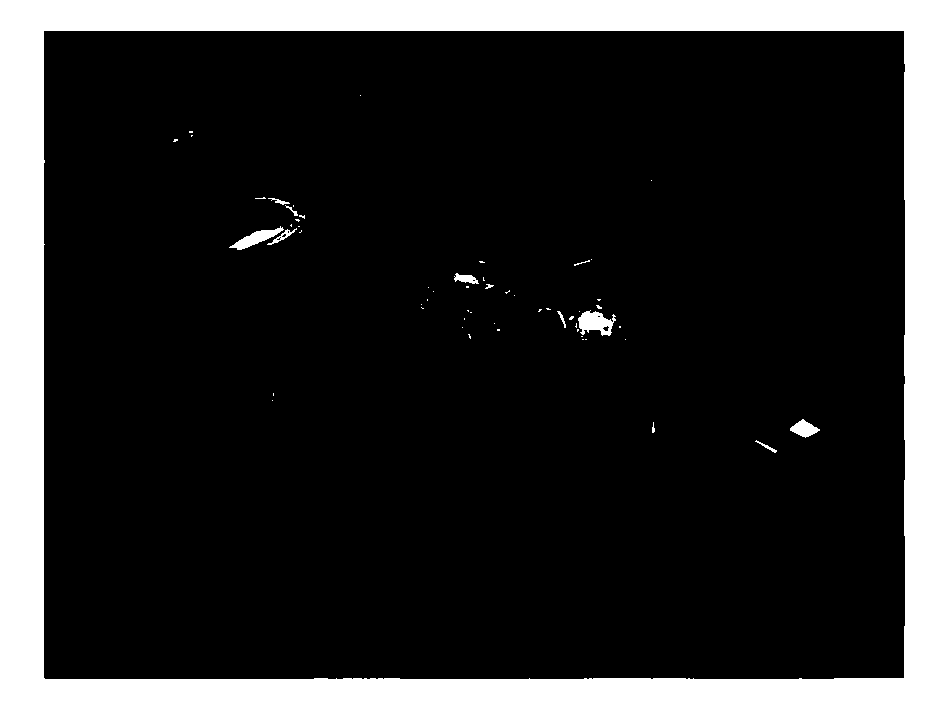Method for directly inducing adventitious buds of butterfly orchid
A phalaenopsis, direct technology, applied in the field of direct induction of phalaenopsis adventitious buds, can solve the problems of 24-48 hours of continuous operation, increased pollution by antioxidants, complicated procedures, etc., achieves remarkable induction effect, promotes rapid growth, and is easy to operate Effect
- Summary
- Abstract
- Description
- Claims
- Application Information
AI Technical Summary
Problems solved by technology
Method used
Image
Examples
Embodiment 1
[0021] Adventitious bud induction technology treatment:
[0022] In order to smoothly and effectively promote the formation of adventitious buds, spray 6.44×10 Phalaenopsis plants with reproductive ability (transition from vegetative growth to reproductive reproduction stage) or perennial robust Phalaenopsis plants in the current year. 6 g MS mineral element + hormone combination combination (10g0.01mg / L TDZ+120g0.1mg / L GA3+150g0.1mg / L NAA), MS mineral element spray, hormone spray combination, control 4 treatments, each The treatment included 10 pots of individual plants, and the experiment was repeated 3 times. The treatment time starts from the beginning of October, every 40 days, a total of 3 times of spraying. Use a 150ml small watering can for each spraying, adjust the mouth of the pot to the best state of mist, and aim at the front of the plant leaves to spray evenly from the inside to the outside. After spraying, it is better for the water mist to adhere to the surface...
Embodiment 2
[0031] Adventitious bud induction technology treatment:
[0032] In order to promote the formation of adventitious buds smoothly and effectively, spray 5.2×10 Phalaenopsis plants with reproductive ability (transition from vegetative growth to reproductive reproduction stage) or perennial robust Phalaenopsis plants in the current year. 6 g MS mineral element + hormone combination combination (10g0.05mg / L TDZ+110g0.3mg / L GA3+140g0.4mg / L NAA), MS mineral element spray, hormone spray combination, control 4 treatments, each The treatment included 10 pots of individual plants, and the experiment was repeated 3 times. The treatment time starts from the beginning of October, every 40 days, a total of 3 times of spraying. Use a 150ml small watering can for each spraying, adjust the mouth of the pot to the best state of mist, and aim at the front of the plant leaves to spray evenly from the inside to the outside. After spraying, it is better for the water mist to adhere to the surface ...
Embodiment 3
[0040]Adventitious bud induction technology treatment:
[0041] In order to promote the formation of adventitious buds smoothly and effectively, spray 5.25×10 Phalaenopsis plants with reproductive ability (transition from vegetative growth to reproductive reproduction stage) or perennial robust Phalaenopsis plants in the current year. 6 g MS mineral element + hormone combination combination (10g0.05mg / L TDZ+100g0.5mg / L GA3+100g0.45mg / L NAA), MS mineral element spray, hormone spray combination, control 4 treatments, each The treatment included 10 pots of individual plants, and the experiment was repeated 3 times. The treatment time starts from the beginning of October, every 40 days, a total of 3 times of spraying. Use a 150ml small watering can for each spraying, adjust the mouth of the pot to the best state of mist, and aim at the front of the plant leaves to spray evenly from the inside to the outside. After spraying, it is better for the water mist to adhere to the surface...
PUM
 Login to View More
Login to View More Abstract
Description
Claims
Application Information
 Login to View More
Login to View More - R&D
- Intellectual Property
- Life Sciences
- Materials
- Tech Scout
- Unparalleled Data Quality
- Higher Quality Content
- 60% Fewer Hallucinations
Browse by: Latest US Patents, China's latest patents, Technical Efficacy Thesaurus, Application Domain, Technology Topic, Popular Technical Reports.
© 2025 PatSnap. All rights reserved.Legal|Privacy policy|Modern Slavery Act Transparency Statement|Sitemap|About US| Contact US: help@patsnap.com



